EVERSPRING SP103 User manual
Other EVERSPRING Security Sensor manuals
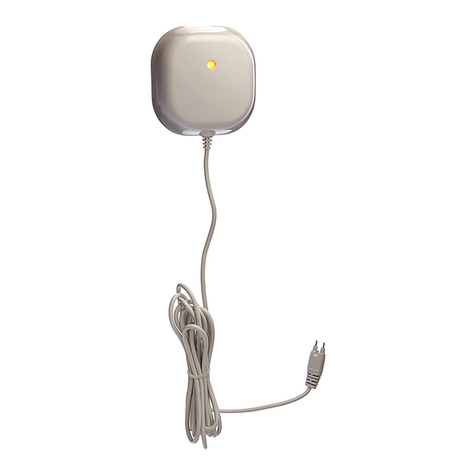
EVERSPRING
EVERSPRING ST812 User manual
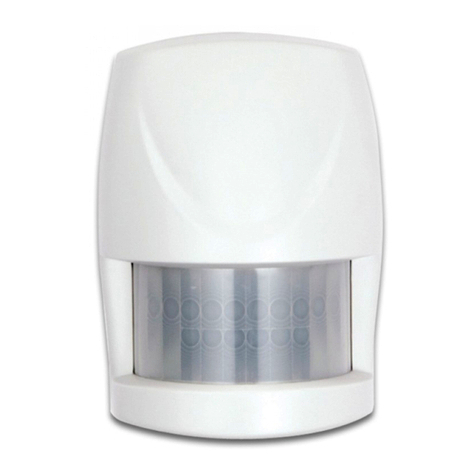
EVERSPRING
EVERSPRING HSP01-0 User manual
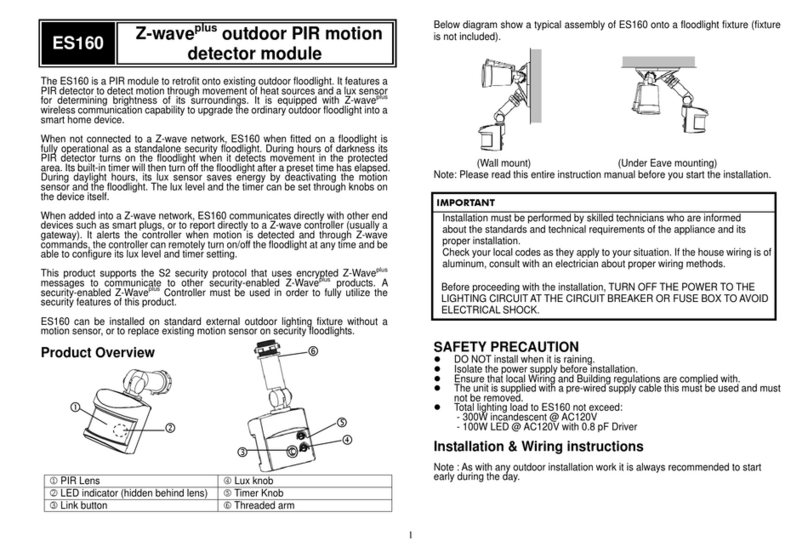
EVERSPRING
EVERSPRING ES160 User manual
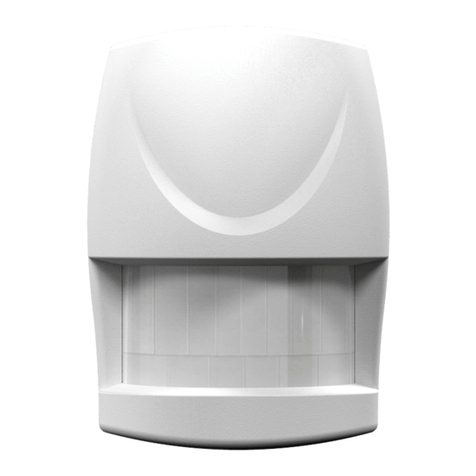
EVERSPRING
EVERSPRING SP817 User manual
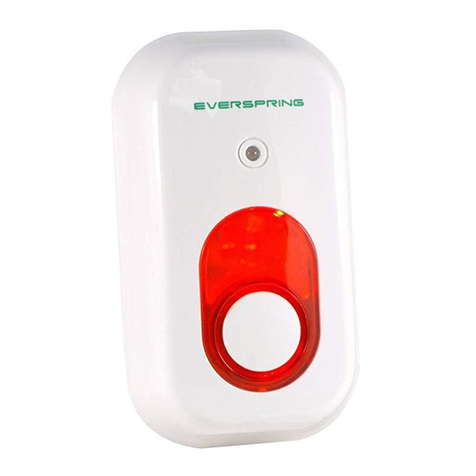
EVERSPRING
EVERSPRING SE812 User manual

EVERSPRING
EVERSPRING HSP02 User manual
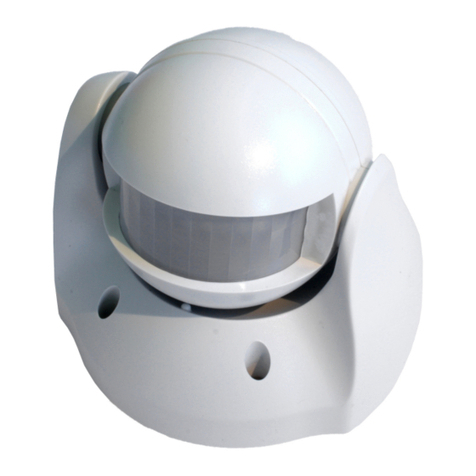
EVERSPRING
EVERSPRING EVRESP816 User manual
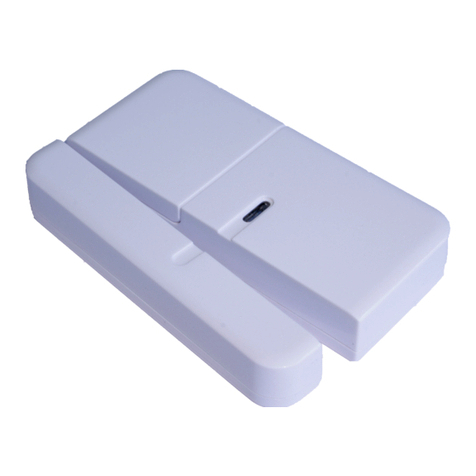
EVERSPRING
EVERSPRING HSM02 User manual
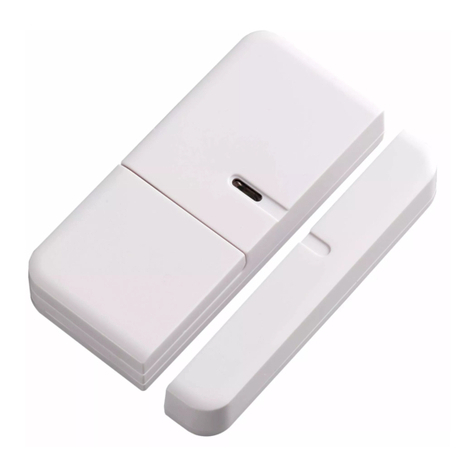
EVERSPRING
EVERSPRING HSM01 User manual
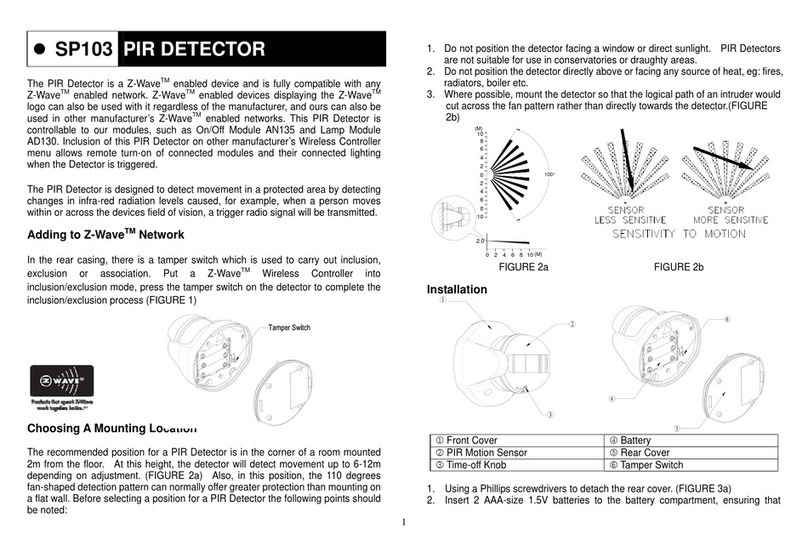
EVERSPRING
EVERSPRING SP103 User manual
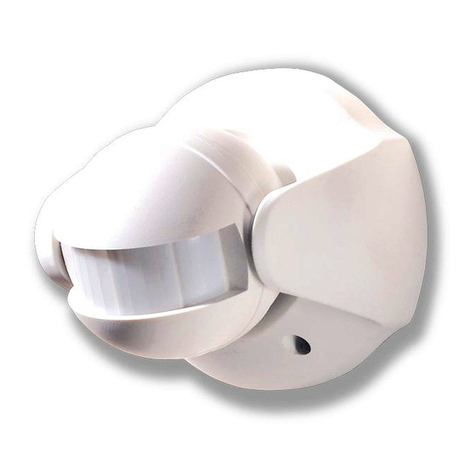
EVERSPRING
EVERSPRING SP816 User manual

EVERSPRING
EVERSPRING SM201 User manual
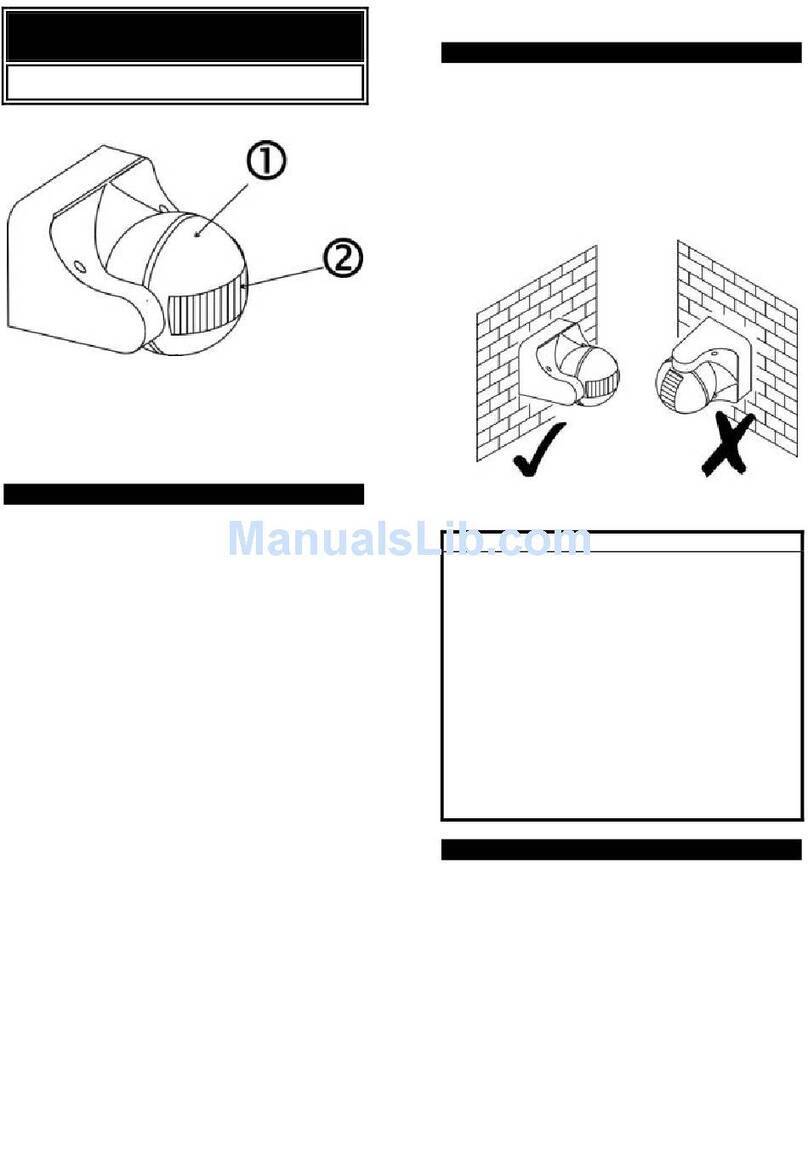
EVERSPRING
EVERSPRING ES34T User manual
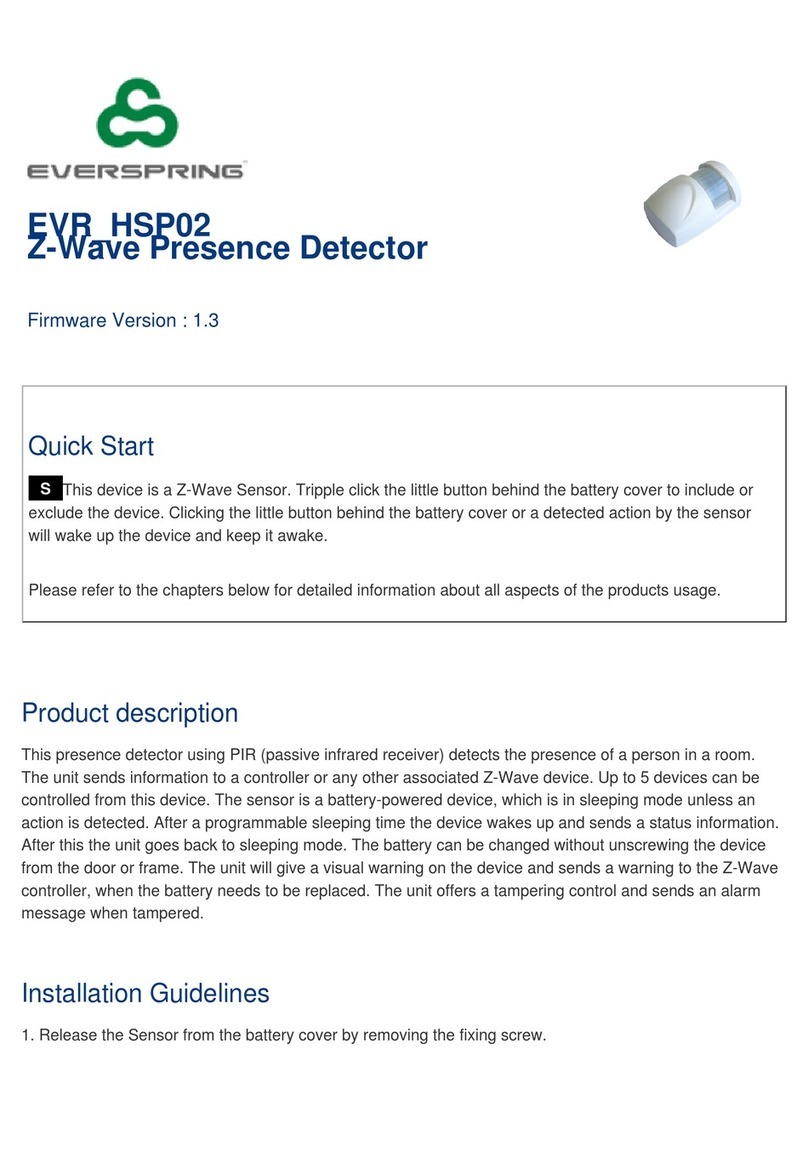
EVERSPRING
EVERSPRING EVR HSP02 User manual
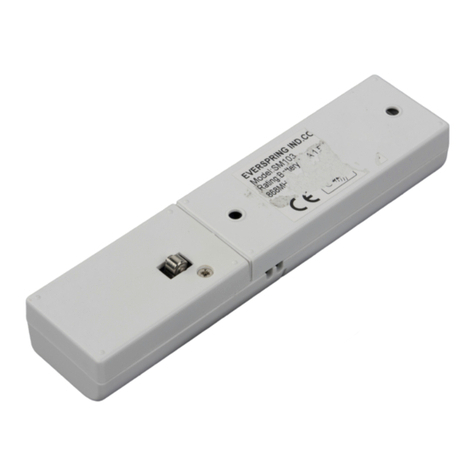
EVERSPRING
EVERSPRING SM103 User manual
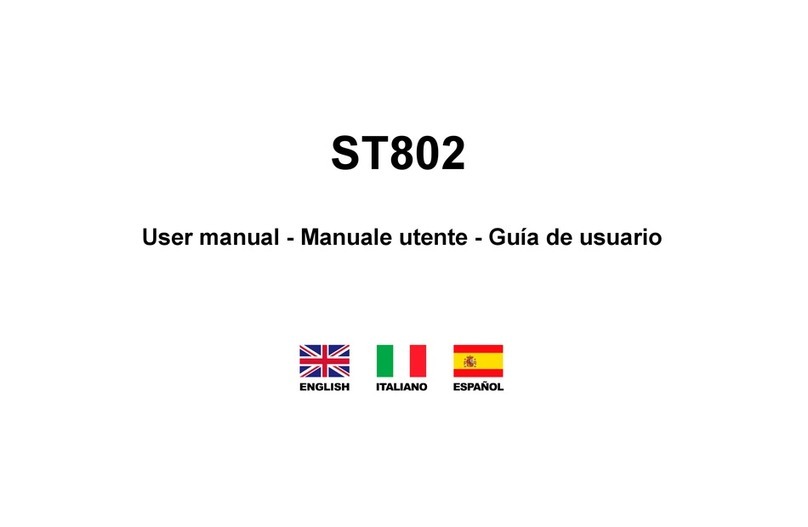
EVERSPRING
EVERSPRING ST802 User manual
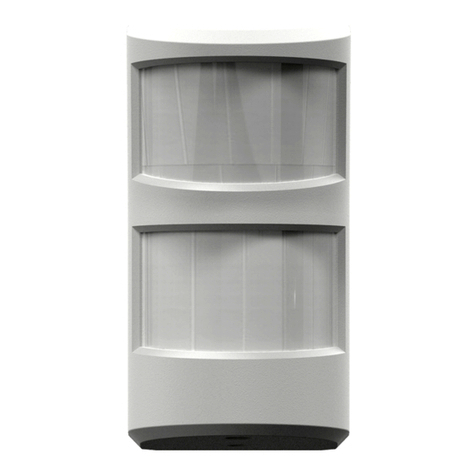
EVERSPRING
EVERSPRING SP815 User manual
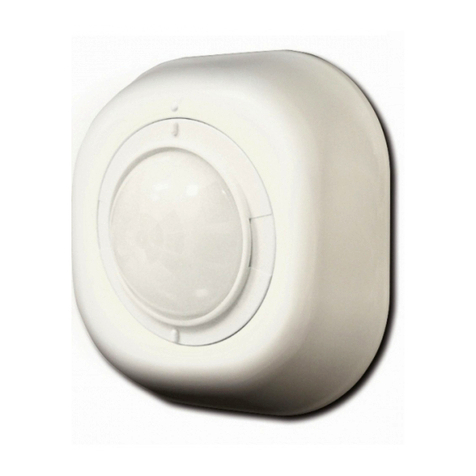
EVERSPRING
EVERSPRING SP814 User manual
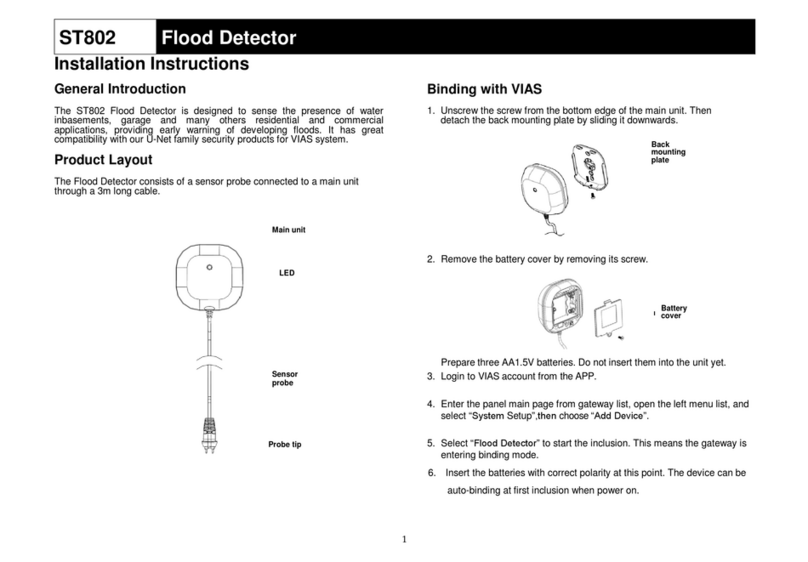
EVERSPRING
EVERSPRING ST802 User manual
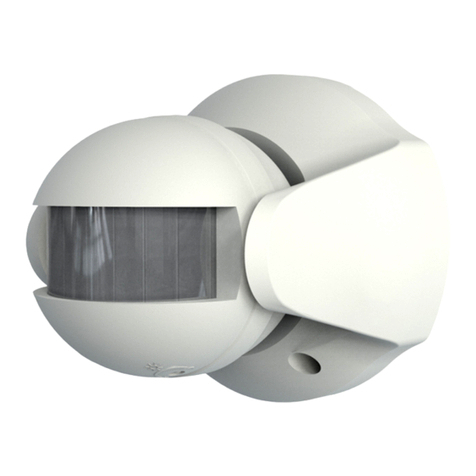
EVERSPRING
EVERSPRING SP819 User manual
Popular Security Sensor manuals by other brands

Shinko
Shinko SE2EA-1-0-0 instruction manual

Det-Tronics
Det-Tronics X Series instructions

ACR Electronics
ACR Electronics COBHAM RCL-300A Product support manual

TOOLCRAFT
TOOLCRAFT 1712612 operating instructions

Elkron
Elkron IM600 Installation, programming and functions manual

Bosch
Bosch WEU PDO 6 Original instructions















